Abstract
The response of the Benson-Calvin cycle to changes in irradiance and photoinhibition was measured in low-light grown barley (Hordeum vulgare) leaves. Upon the transition from the growth irradiance (280 micromoles per square meter per second) to a high photoinhibitory irradiance (1400 micromoles per square meter per second), the CO2 assimilation rate of the leaves doubled within minutes but high irradiance rapidly caused a reduction in quantum efficiency. Following exposure to high light the activities of NADP-malate dehydrogenase and fructose-1,6-bisphosphatase obtained near maximum values and the activation state of ribulose-1,5-bisphosphate carboxylase increased. The activity of the latter remained constant throughout the period of photoinhibitory irradiance, but the increase in the activities of fructose-1,6-bisphosphatase and NADP-malate dehydrogenase was transient decreasing once more to much lower values. This suggests that immediately following the transition to high light reduction and activation of redox-modulated enzymes occurred, but then the stroma became relatively oxidized as a result of photoinhibition. The leaf contents of glucose 6-phosphate and fructose 6-phosphate increased following exposure to high light but subsequently decreased, suggesting that following photoinhibition sucrose synthesis exceeded the rate of carbon assimilation. The ATP content attained a constant value much higher than that in low light. During photoinhibition the glycerate 3-phosphate content greatly increased while ribulose-1,5-bisphosphate decreased. The fructose-1,6-bisphosphate and triose phosphate contents increased initially and then remained constant. During photoinhibition CO2 assimilation was not limited by ribulose-1,5-bisphosphate carboxylase activity but rather by the regeneration of the substrate, ribulose-1,5-bisphosphate, related to a restriction on the supply of reducing equivalents.
Full text
PDF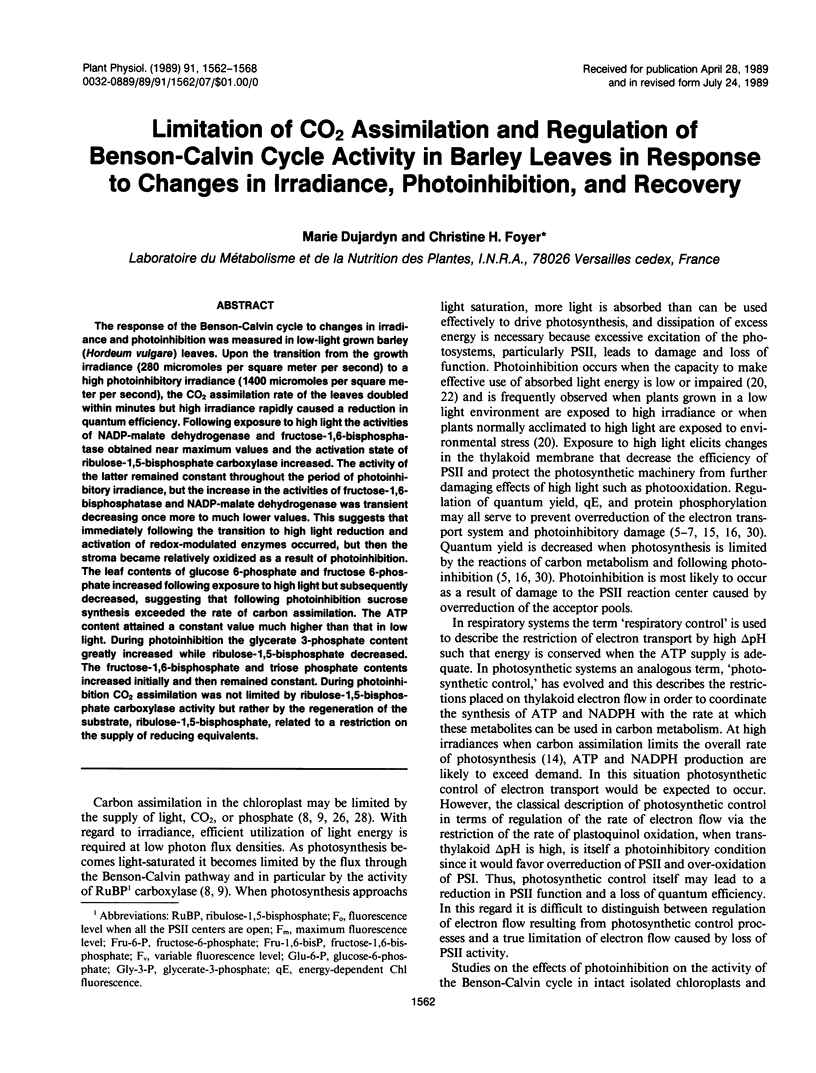
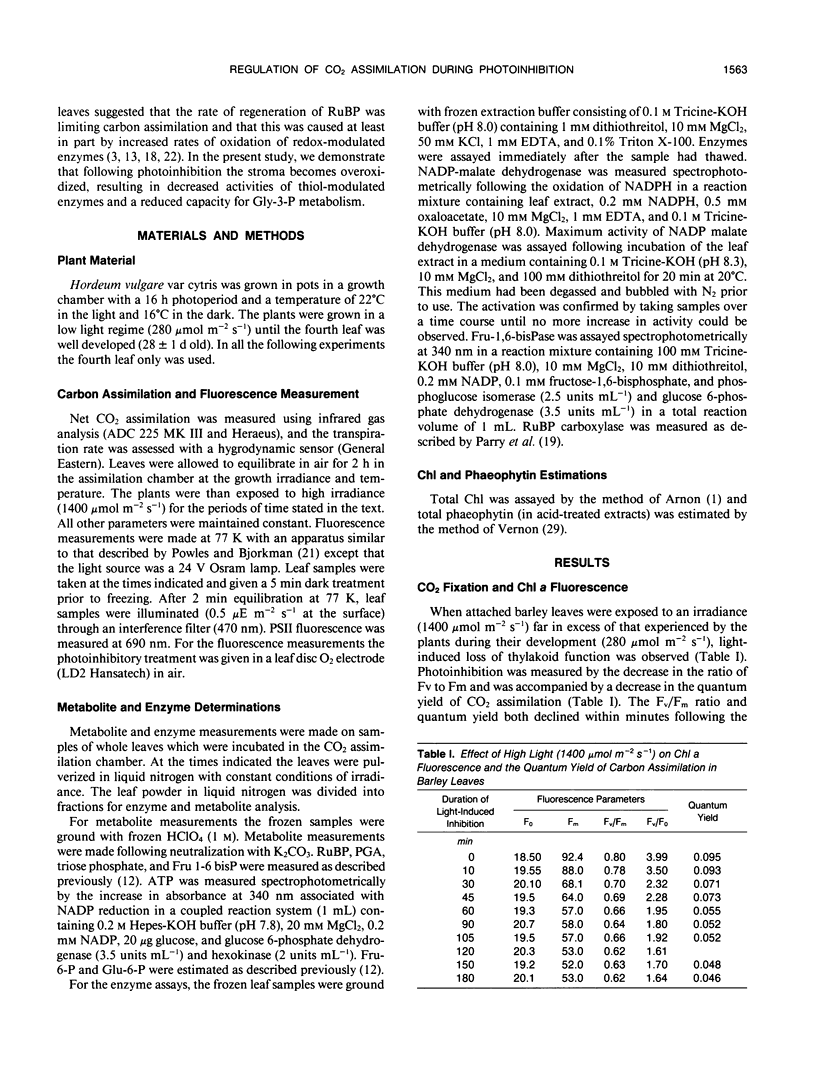
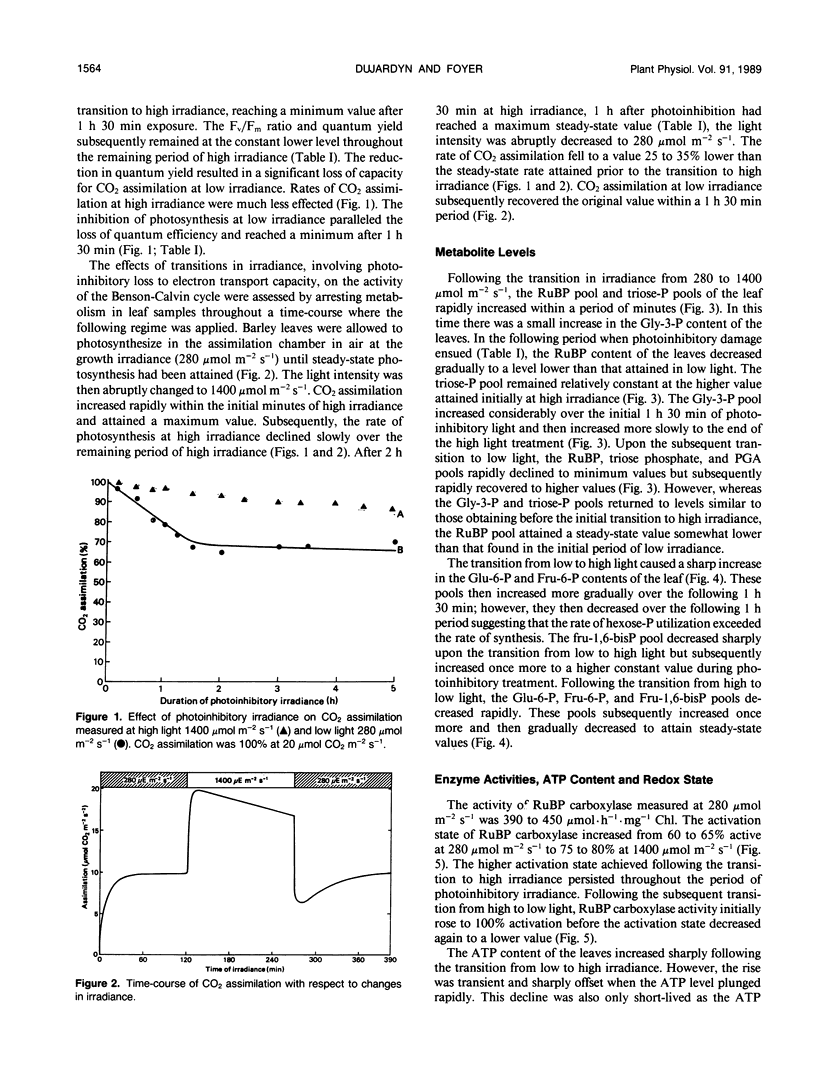
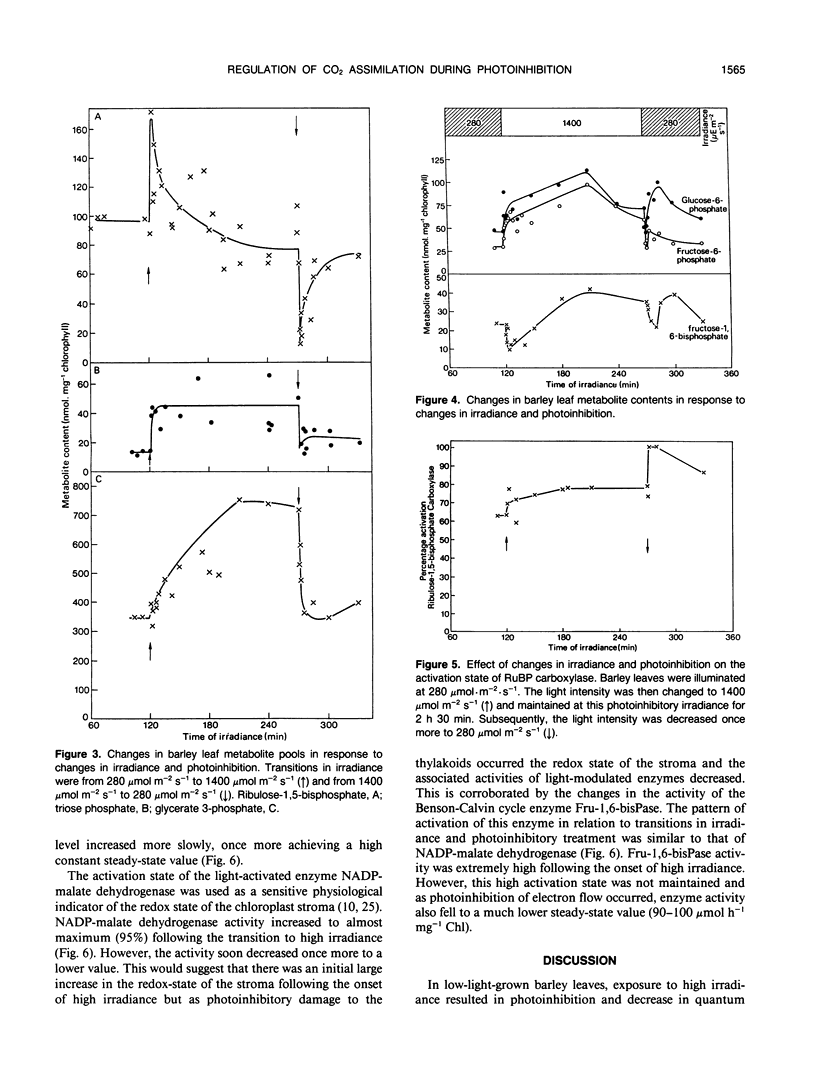
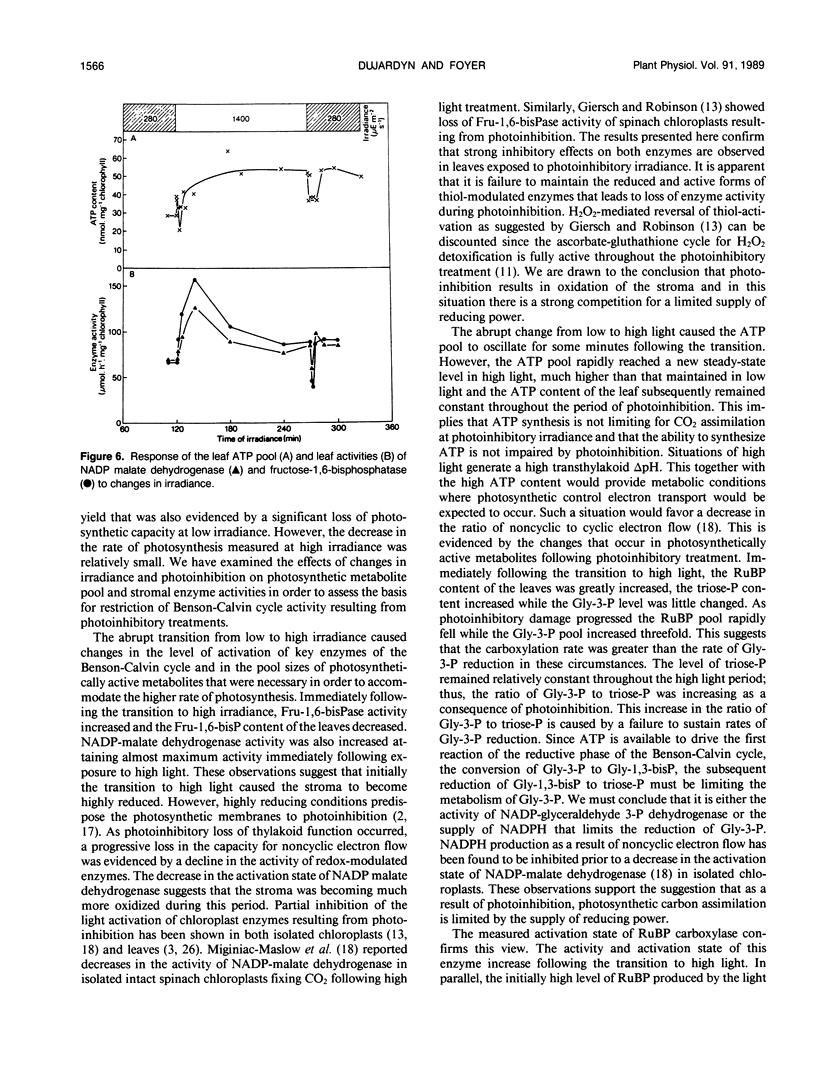
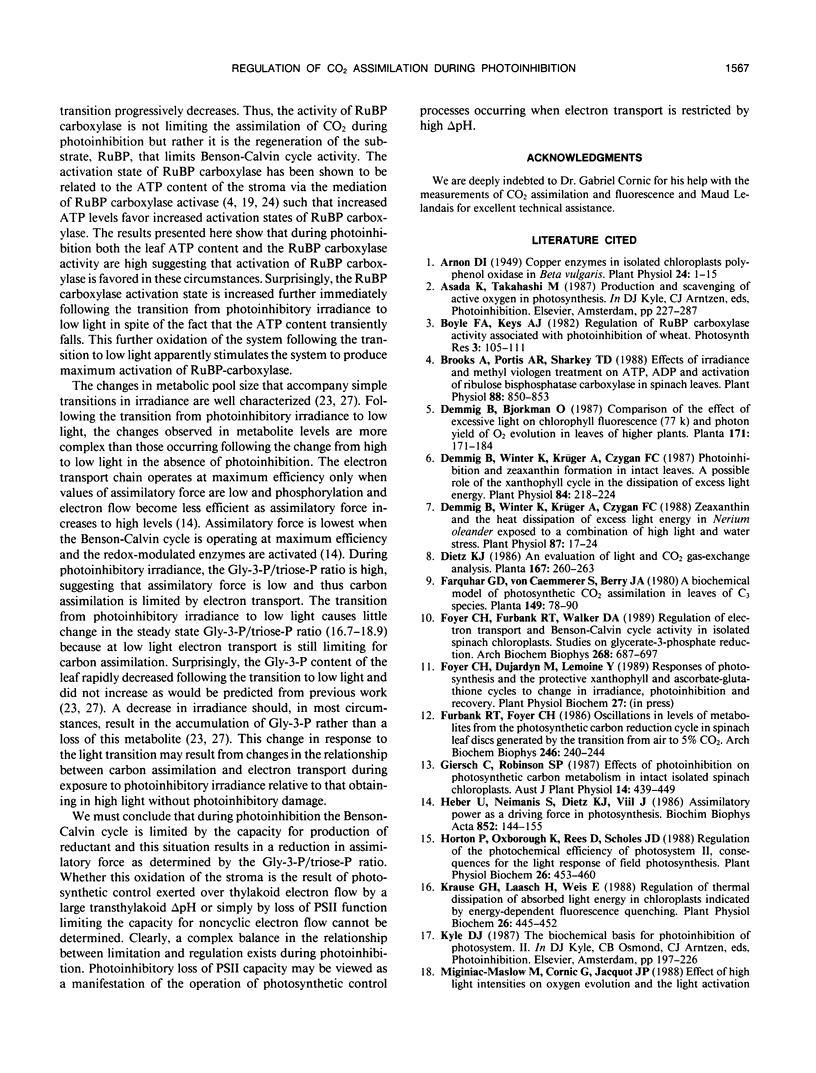
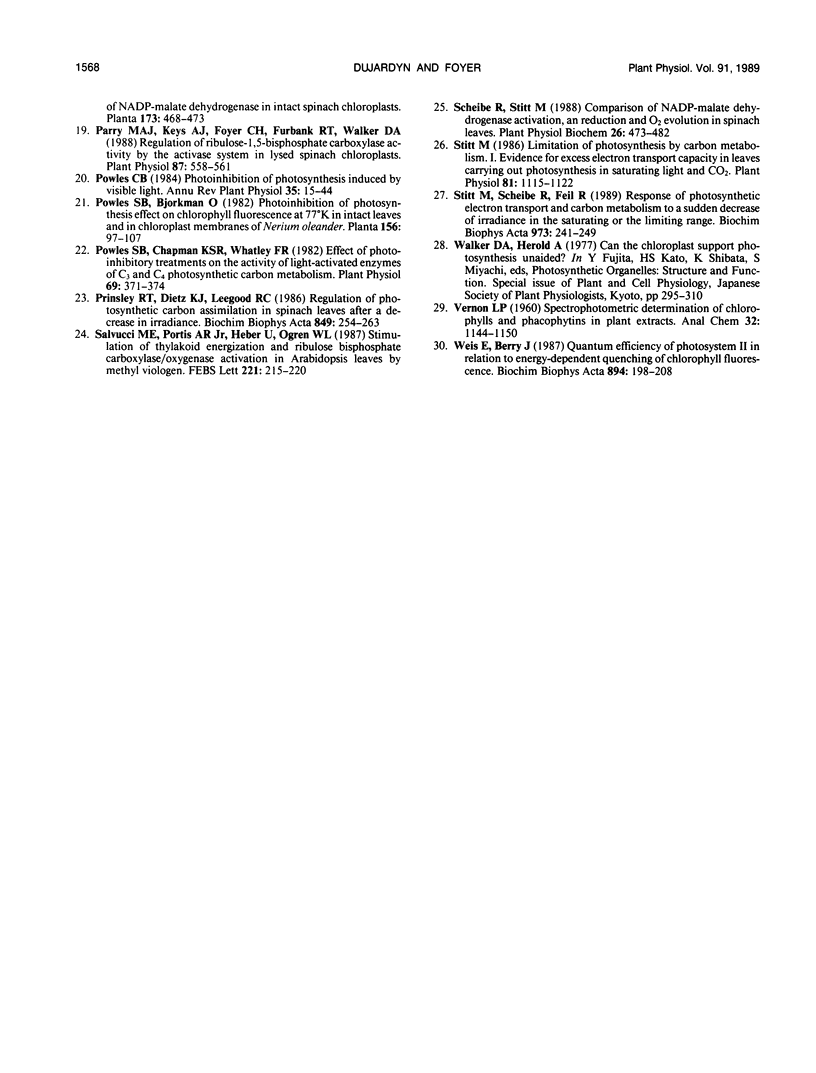
Selected References
These references are in PubMed. This may not be the complete list of references from this article.
- Arnon D. I. COPPER ENZYMES IN ISOLATED CHLOROPLASTS. POLYPHENOLOXIDASE IN BETA VULGARIS. Plant Physiol. 1949 Jan;24(1):1–15. doi: 10.1104/pp.24.1.1. [DOI] [PMC free article] [PubMed] [Google Scholar]
- Brooks A., Portis A. R., Sharkey T. D. Effects of Irradiance and Methyl Viologen Treatment on ATP, ADP, and Activation of Ribulose Bisphosphate Carboxylase in Spinach Leaves. Plant Physiol. 1988 Nov;88(3):850–853. doi: 10.1104/pp.88.3.850. [DOI] [PMC free article] [PubMed] [Google Scholar]
- Demmig B., Winter K., Krüger A., Czygan F. C. Photoinhibition and zeaxanthin formation in intact leaves : a possible role of the xanthophyll cycle in the dissipation of excess light energy. Plant Physiol. 1987 Jun;84(2):218–224. doi: 10.1104/pp.84.2.218. [DOI] [PMC free article] [PubMed] [Google Scholar]
- Demmig B., Winter K., Krüger A., Czygan F. C. Zeaxanthin and the Heat Dissipation of Excess Light Energy in Nerium oleander Exposed to a Combination of High Light and Water Stress. Plant Physiol. 1988 May;87(1):17–24. doi: 10.1104/pp.87.1.17. [DOI] [PMC free article] [PubMed] [Google Scholar]
- Foyer C. H., Furbank R. T., Walker D. A. Coregulation of electron transport and Benson-Calvin cycle activity in isolated spinach chloroplasts: studies on glycerate 3-phosphate reduction. Arch Biochem Biophys. 1989 Feb 1;268(2):687–697. doi: 10.1016/0003-9861(89)90337-8. [DOI] [PubMed] [Google Scholar]
- Furbank R. T., Foyer C. H. Oscillations in levels of metabolites from the photosynthetic carbon reduction cycle in spinach leaf disks generated by the transition from air to 5% CO2. Arch Biochem Biophys. 1986 Apr;246(1):240–244. doi: 10.1016/0003-9861(86)90469-8. [DOI] [PubMed] [Google Scholar]
- Parry M. A., Keys A. J., Foyer C. H., Furbank R. T., Walker D. A. Regulation of ribulose-1,5-bisphosphate carboxylase activity by the activase system in lysed spinach chloroplasts. Plant Physiol. 1988 Jul;87(3):558–561. doi: 10.1104/pp.87.3.558. [DOI] [PMC free article] [PubMed] [Google Scholar]
- Powles S. B., Chapman K. S., Whatley F. R. Effect of photoinhibitory treatments on the activity of light-activated enzymes of c(3) and c(4) photosynthetic carbon metabolism. Plant Physiol. 1982 Feb;69(2):371–374. doi: 10.1104/pp.69.2.371. [DOI] [PMC free article] [PubMed] [Google Scholar]
- Stitt M. Limitation of Photosynthesis by Carbon Metabolism : I. Evidence for Excess Electron Transport Capacity in Leaves Carrying Out Photosynthesis in Saturating Light and CO(2). Plant Physiol. 1986 Aug;81(4):1115–1122. doi: 10.1104/pp.81.4.1115. [DOI] [PMC free article] [PubMed] [Google Scholar]


